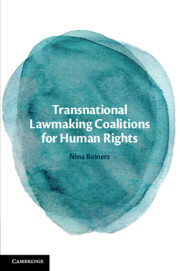Book contents
- Transnational Lawmaking Coalitions for Human Rights
- Transnational Lawmaking Coalitions for Human Rights
- Copyright page
- Dedication
- Contents
- Figures
- Tables
- Acknowledgments
- Abbreviations
- 1 Introduction
- 2 Human Rights Treaty Interpretation
- 3 Transnational Lawmaking Coalitions
- 4 How Water Became a Human Right
- 5 Interpretation across Treaty Bodies
- 6 Lawmaking without Governments?
- 7 Conclusion
- Book part
- Bibliography
- Index
5 - Interpretation across Treaty Bodies
Published online by Cambridge University Press: 25 November 2021
- Transnational Lawmaking Coalitions for Human Rights
- Transnational Lawmaking Coalitions for Human Rights
- Copyright page
- Dedication
- Contents
- Figures
- Tables
- Acknowledgments
- Abbreviations
- 1 Introduction
- 2 Human Rights Treaty Interpretation
- 3 Transnational Lawmaking Coalitions
- 4 How Water Became a Human Right
- 5 Interpretation across Treaty Bodies
- 6 Lawmaking without Governments?
- 7 Conclusion
- Book part
- Bibliography
- Index
Summary
Chapter 5 delves into three additional cases of treaty interpretation by the human rights treaty bodies. The aim of the chapter is to probe the plausibility of the TLC concept across the human rights regime. I use insights and findings gathered from the drafting process of GC No. 15 to articulate a typology that distinguishes the treaty bodies by their likelihood to need external input when drafting GCs. Drawing on a combination of data – documents and existing scholarship, as well as interviews and personal observations – the case studies ultimately demonstrate the TLC concept to be applicable to drafting processes in other treaty bodies, even where their formation is less likely.
Keywords
- Type
- Chapter
- Information
- Transnational Lawmaking Coalitions for Human Rights , pp. 94 - 115Publisher: Cambridge University PressPrint publication year: 2021

